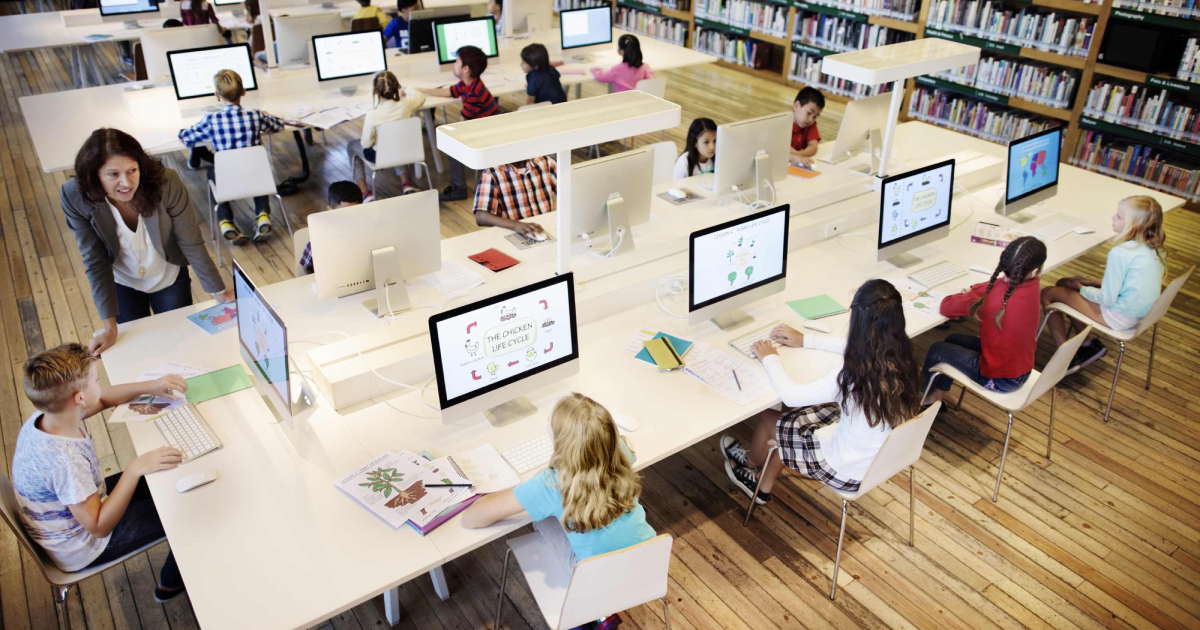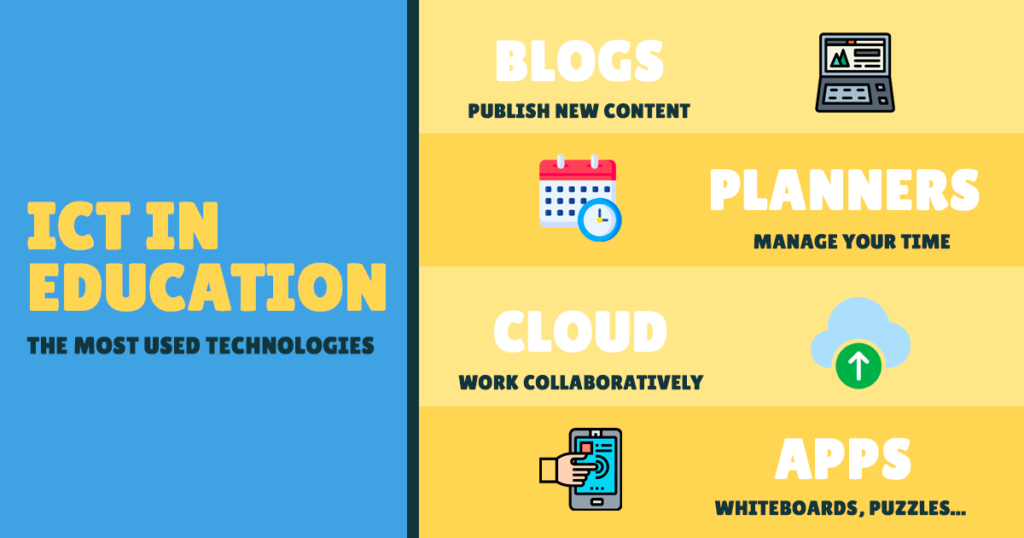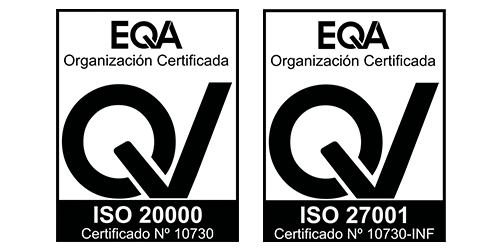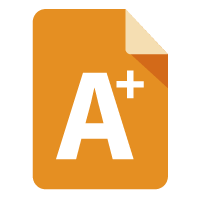The appearance of new technologies in our day to day has made it possible for the use of ICT in education to increase considerably in recent years. ICTs have gained great relevance in our environment, having a wide catalog of applications in various sectors such as entertainment, administration, robotics, education and all kinds of companies.
Specifically, in this blog article we would like to analyze the impact of the use of ICT in education and we will begin by understanding the term ICT.
Before we start… what is ICT?
When we talk about ICT we are referring to information and communication technologies. If we had to define the term, surely we would do it as “a set of techniques and devices based on new technological tools and the different supports and channels of information and communication”. To this we could add the process of obtaining, storing, processing and transmitting information digitally.
The notable increase in the social use of ICTs and their enormous impact is an aspect that cannot go unnoticed in the world of education. ICT is already becoming a fundamental tool for new teachers and students in the classroom.
ICT in education
The use of ICT is so widespread in society that classrooms should not be less, and they must ensure that they take advantage of what they can bring us. However, children and young people must be taught to use them consciously and safely.
The educational sector must assume the responsibility of gradually implementing all the technologies that may favor student learning in some way, and ensure that they learn to use them in a world where they are already part of professional life and their social environment.
What are the most used technologies in the classroom?
- Blogs and social networks: it gives us the possibility of creating work groups where students expose or discuss different topics, publish content related to the subjects, etc.
- Planning through tools: calendars and task managers are very useful to schedule exams, deliveries, create workflows, etc.
- Data storage in the cloud: it allows us the possibility of working collaboratively, accessing from any device and from any place. Some of the tools that use this technology are office packages, storage, etc.
- Digital whiteboards and interactive tables: whiteboards allow projecting and controlling images from a computer, making notes and comments, and saving and / or sending the screen by email. The interactive tables give the possibility for the students to interact directly with the surface.
In the case of e-learning platforms such as Pedagoo, online assessments are added, including thousands of exam questions, detailed student progress, standardization of assessments or creation of workflows.
Benefits of using ICT in education
In our previous blog article we already talked about the clear benefits of e-learning platforms for education. However, this time we will focus on the advantages of ICT in general.
It has been proven that the use of ICT in the classroom increases the motivation of the students, showing more interest and becoming more involved in the areas they study. ICT enables the use of innovative educational resources and the renewal of learning methods, establishing a more active collaboration of students and the simultaneous acquisition of technological knowledge.
Furthermore, ICTs are of great help in developing discernment. Being able to search for various sources and contrast them, as well as to structure information are some of the most notable skills that students develop thanks to the use of ICT. But there are more advantages:
- Their interest in learning grows: the use of resources as varied as videos, websites, graphics, and games make traditional subjects more interesting. Multimedia content is a very useful tool to bring different subjects closer to students in a complete and entertaining way.
- Interactivity: the use of ICT in the classroom promotes the student’s active and participatory attitude, which is involved in learning and is positioned as the protagonist.
- Collaboration between students: Collaboration between students is clearly enhanced thanks to various digital tools. It is much easier for them to create team projects, cooperate and learn from each other.
- They enhance creativity: ICT tools stimulate the development of the imagination, as well as the initiative of all class members.
- Increased communication: close communication between students and teachers is encouraged through various channels, in a more spontaneous and less formal way.
- Personalization and content up-to-date: digital environments allow real-time updating of all information and resources. In addition, it is possible to adjust the tools and content to local and nearby realities.
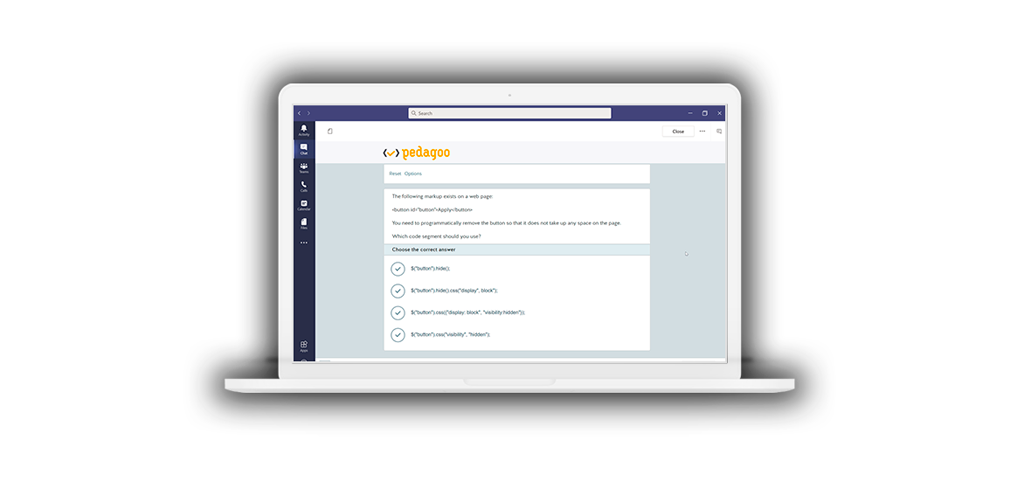 Pedagoo: The online platform that makes learning easier
Pedagoo: The online platform that makes learning easier
At Pedagoo we are aware that digital skills will be basic when determining entry into the professional world and for life in general. Therefore, the use of ICT in the classroom is more than justified.
With Pedagoo, you can easily create questions and tests, evaluate all kinds of skills, and get immediate results. Thanks to Pedagoo’s technology, students can improve their knowledge and understanding, while teachers are able to reduce their workload, allowing them to concentrate on teaching.
Do you want to know how it works? With this video you will see how to manage the entire evaluation process from a single platform.

